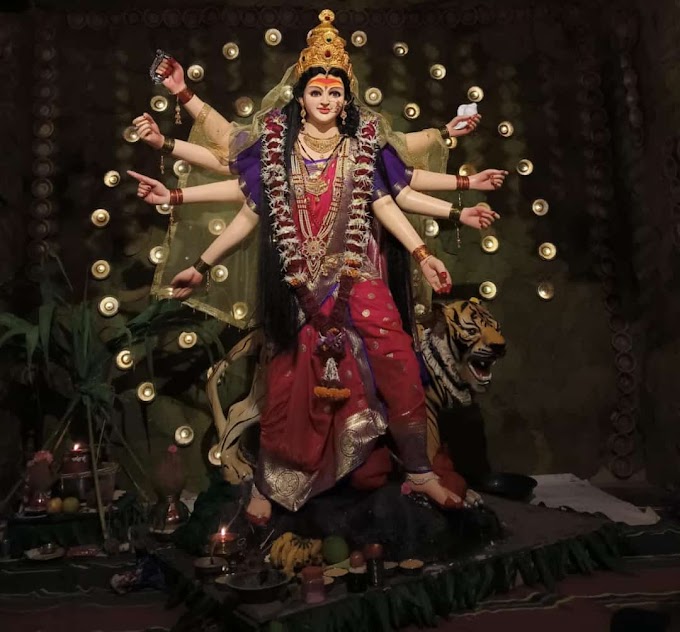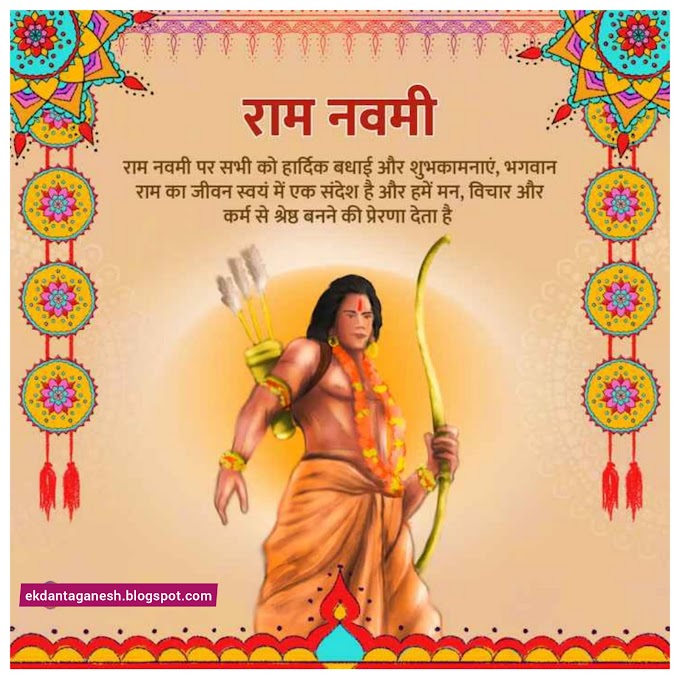Navratri, which means “Nine Nights” is a 9 night, 10 day long celebration during which nine forms of Devi/Shakti are worshipped. The 10th day is the festival of Dussehra or Vijayadashmi.
The nine forms of Devi are:
1.) Śailaputrī (Sati, Daughter of the Himālayas, Wife of Lord Shiva)
2.) Brahmachāriṇī (One who observes the state of celibacy doing penance)
3.) Chandraghaṇṭā ( One who bears the moon in her necklace )
4.) Kūṣmāṇḍa (the creator of the universe)
5.) Skanda-Mātā (The mother of Skanda, Kārttikeya, born out of her powers)
6.) Kātyāyanī (The daughter of sage Kātyāyana, who incarnated to help the Devas)
7.) Kālarātrī (black as night, destroyer of Kālī)
8.) Mahāgaurī (the wife of Lord Shiva, doing great penance)
9.) Siddhidātrī (Provider of Siddhis, giver of mystic powers)
The most prevalent story relating to Navratri is the following one of Goddess Durga & the Buffalo Demon Mahishasura
Lord Brahma, the creator, granted Mahishasura the "buffalo demon," a boon that protected him from any man in the world . Empowered by this gift, Mahishasura set out to conquer the world, heaven and the world, and brought about the defeat of the king of deities, Indra. At the pleading of Indra, the king of the Gods, Lords Brahma, Vishnu and Shiva created Devi Durga, by combining their own divine powers (shakti). Endowed with the trinity's shakti, Durga proved to be a formidable opponent who fought Mahisa for nine days, beheading him on the tenth. The nine nights known as Navratri, symbolize the nine days of battle between Devi Durga and Mahishasura, while the tenth day, which is vijayadashami-literally means the victorious tenth day of conquest of good over evil.
According to the Krittibas Ramayana, Rama invoked the goddess Durga in his epic battle against Ravana. Although Goddess Durga was traditionally worshipped in the late spring, due to contingencies of battle, Lord Rama had to invoke her in the form of astam (eighth) Mahavidya (Maa Bagla) in the autumn and thus is known as akaal bodhan (invoking out of scheduled time). This autumnal ritual was different from the conventional Durga Puja, which is usually celebrated in the springtime. So, this Puja is also known as 'akal-bodhan' or out-of-season ('akal') worship ('bodhan'). This Rama's date for the Navaratri puja has now gained ascendancy and culminates with Dussehra in North India on the following day.










